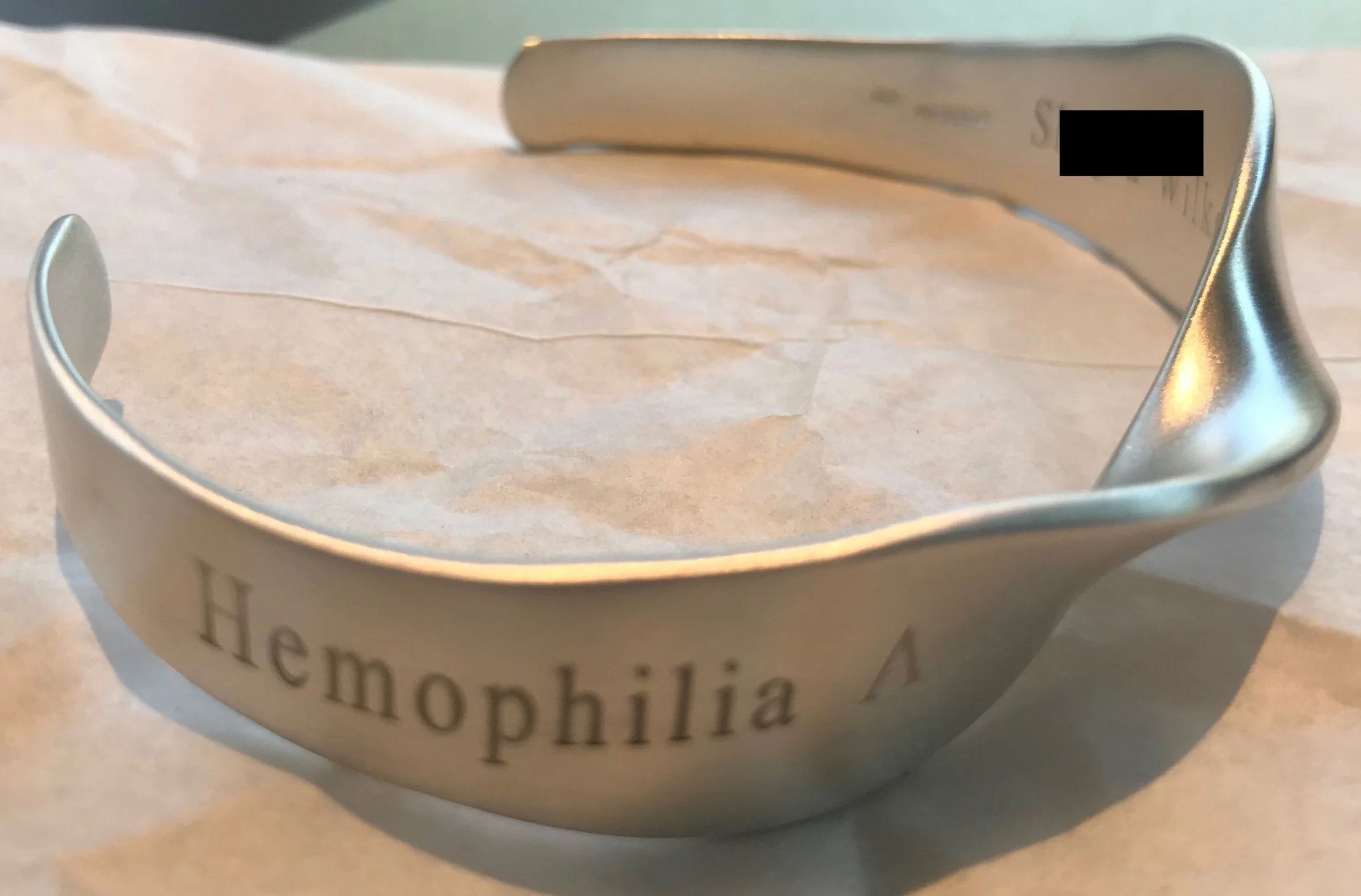Hemophilia Bracelets
Hemophilia is a rare genetic bleeding disorder that affects about 1 in 5,000 males worldwide. The condition results from a deficiency in certain clotting factors that are essential for the blood to clot normally. As a result, people with hemophilia are at an increased risk of bleeding and can experience severe bleeding episodes, which can be life-threatening if left untreated.
Why Wear a Medical ID?
Wearing a medical ID is critical for people with hemophilia because it can help medical professionals provide appropriate treatment in an emergency. In the event of an accident or injury, medical personnel may not be aware of the person's medical condition and may not know that they have hemophilia. Without this information, they may provide treatment that could actually make the bleeding worse.
For example, if someone with hemophilia is in a car accident and has a head injury, the emergency medical team may need to give them medication to prevent blood clots from forming in the brain. However, if the medical team is not aware that the person has hemophilia, this medication could cause the person to bleed even more and make the situation worse. Wearing a medical ID can help prevent this type of situation by providing important information about the person's medical condition.
In addition to wearing a medical ID, people with hemophilia also need to take other precautions to avoid bleeding. This may include avoiding certain activities that could lead to injury, such as contact sports or activities that could cause falls. They may also need to take medications to prevent bleeding or to treat bleeding episodes when they occur.
Types of Hemophilia
There are two types of hemophilia: hemophilia A and hemophilia B. Hemophilia A is the most common type and is caused by a deficiency in clotting factor VIII. Hemophilia B is less common and is caused by a deficiency in clotting factor IX. The severity of hemophilia varies from person to person, with some individuals experiencing only mild symptoms while others have severe bleeding episodes.
Because of the increased risk of bleeding, people with hemophilia need to take special precautions to avoid injury and bleeding. One important precaution is to wear a medical identification (ID) bracelet or necklace at all times. A medical ID contains information about the person's medical condition, such as the fact that they have hemophilia, as well as emergency contact information.
Treatment for Hemophilia
Treatment for hemophilia typically involves replacing the missing clotting factor through a process called factor replacement therapy. This may involve receiving infusions of clotting factor concentrate on a regular basis to prevent bleeding, or receiving infusions of clotting factor when a bleeding episode occurs.
Despite these treatments, people with hemophilia still need to be vigilant about avoiding injury and taking precautions to prevent bleeding. Wearing a medical ID is one important way to help ensure that they receive appropriate treatment in an emergency.
Hemophilia is a rare genetic bleeding disorder that can result in severe bleeding episodes. Because of the increased risk of bleeding, people with hemophilia need to take special precautions to avoid injury and bleeding, including wearing a medical ID at all times. A medical ID can provide critical information about the person's medical condition and help medical professionals provide appropriate treatment in an emergency. By taking these precautions, people with hemophilia can help manage their condition and reduce the risk of serious bleeding episodes.
Hemophilia Online Resources
National Hemophilia Foundation (NHF): The NHF is a prominent organization in the United States that supports individuals and families affected by bleeding disorders, including hemophilia. They provide education, advocacy, and resources for managing hemophilia.
World Federation of Hemophilia (WFH): The WFH is an international organization dedicated to improving the lives of people with hemophilia and other bleeding disorders. They work to ensure better access to care, treatment, and support worldwide.
Hemophilia Federation of America (HFA): HFA is a U.S.-based organization that focuses on providing resources and advocacy for people with bleeding disorders, including hemophilia. They offer support programs, educational materials, and community engagement.
Canadian Hemophilia Society (CHS): CHS is a national organization in Canada that supports individuals and families affected by hemophilia and other bleeding disorders. They provide resources, advocacy, and community support.
European Hemophilia Consortium (EHC): The EHC is a network of patient organizations for people with hemophilia and other bleeding disorders in Europe. They work on raising awareness, advocacy, and improving access to care.
Hemophilia Association of India (HAI): HAI is an organization that provides support, education, and advocacy for individuals with hemophilia in India. They work towards better treatment and care for the hemophilia community.
National Hemophilia Foundation of Japan (NHFJ): NHFJ is a Japanese organization that offers information, support, and advocacy for people with hemophilia and their families in Japan.
Hemophilia Society UK: The Hemophilia Society in the UK provides information, support, and advocacy for people with bleeding disorders, including hemophilia. They also work on promoting research and improving treatment.
